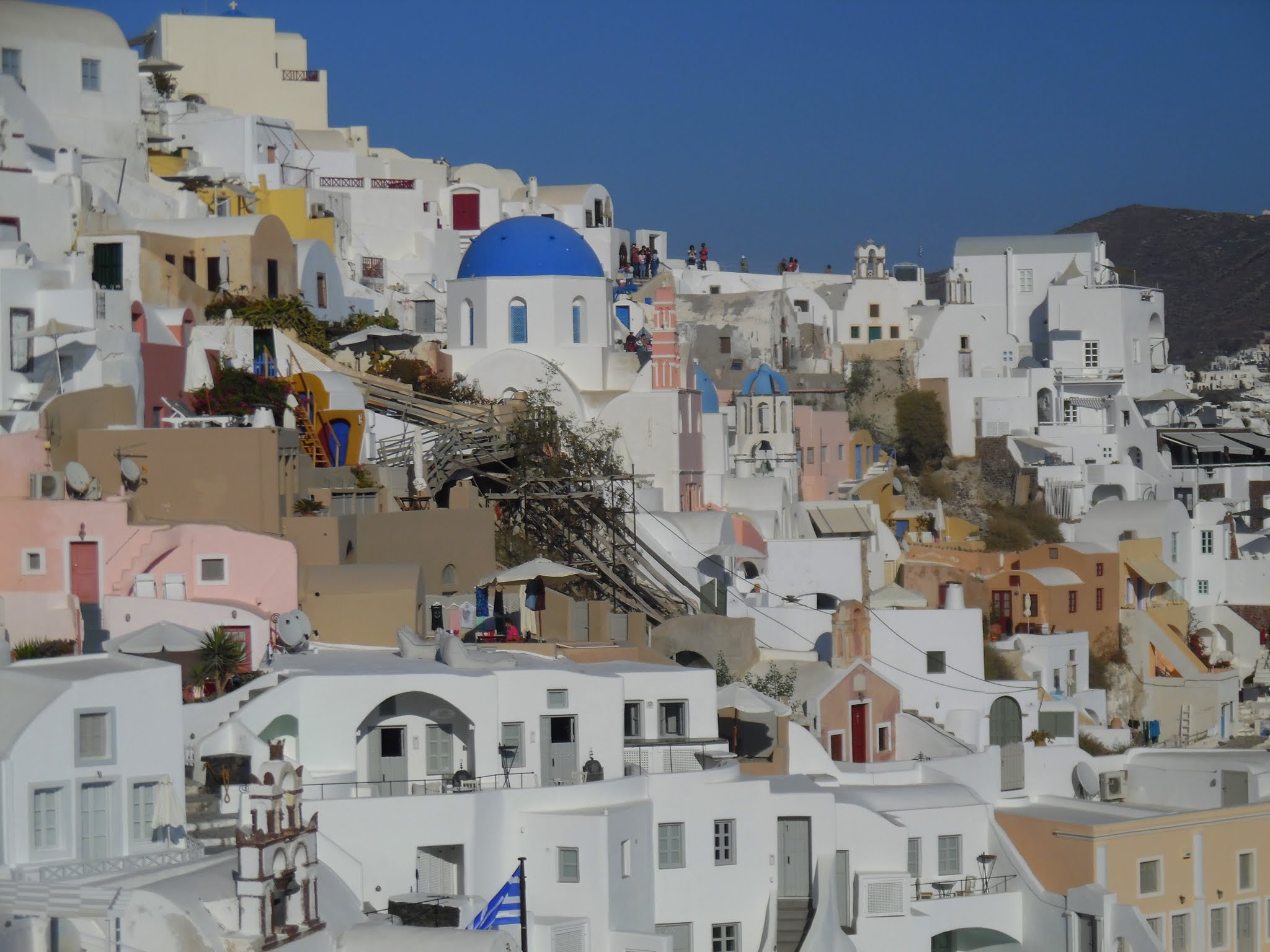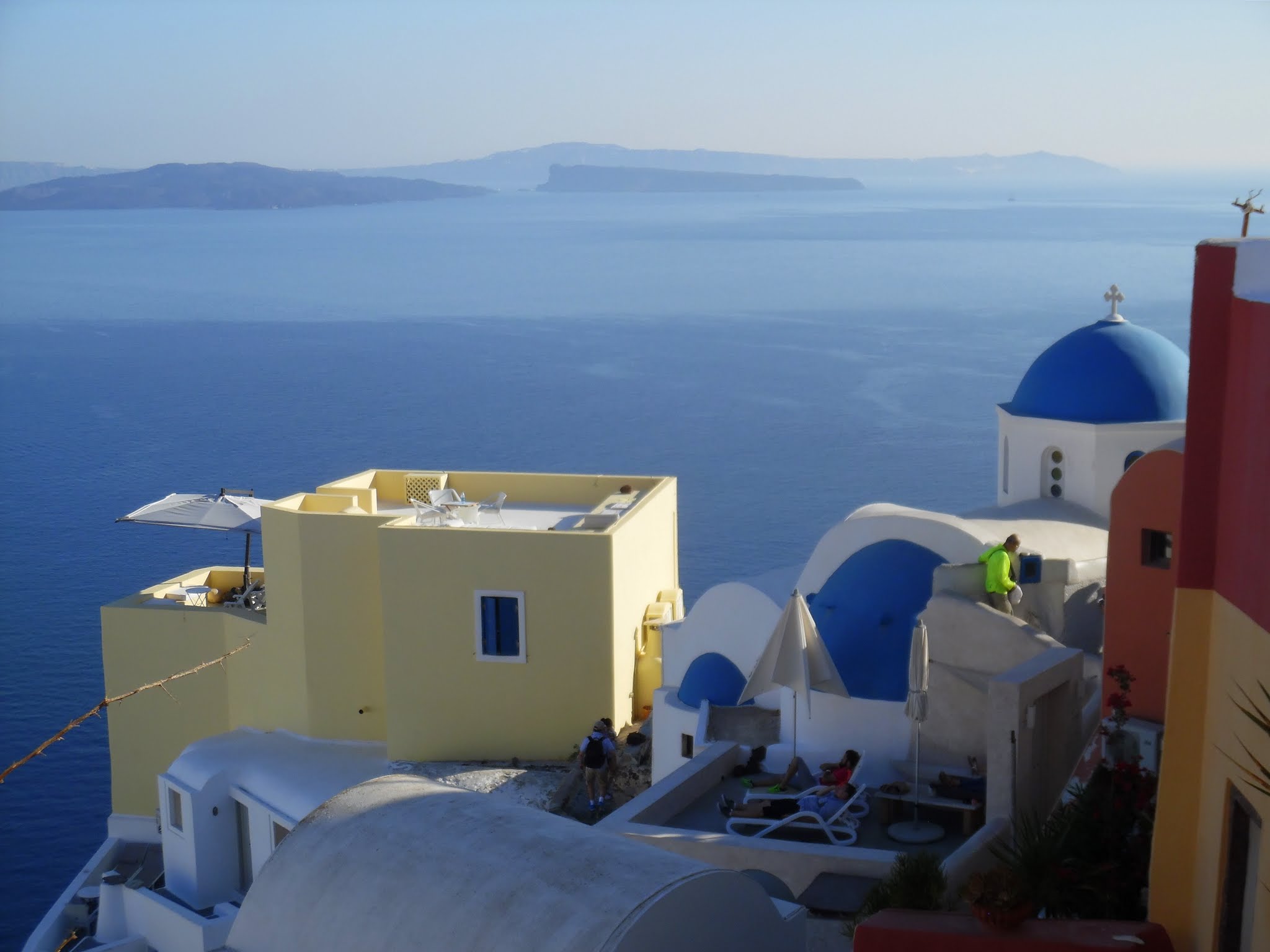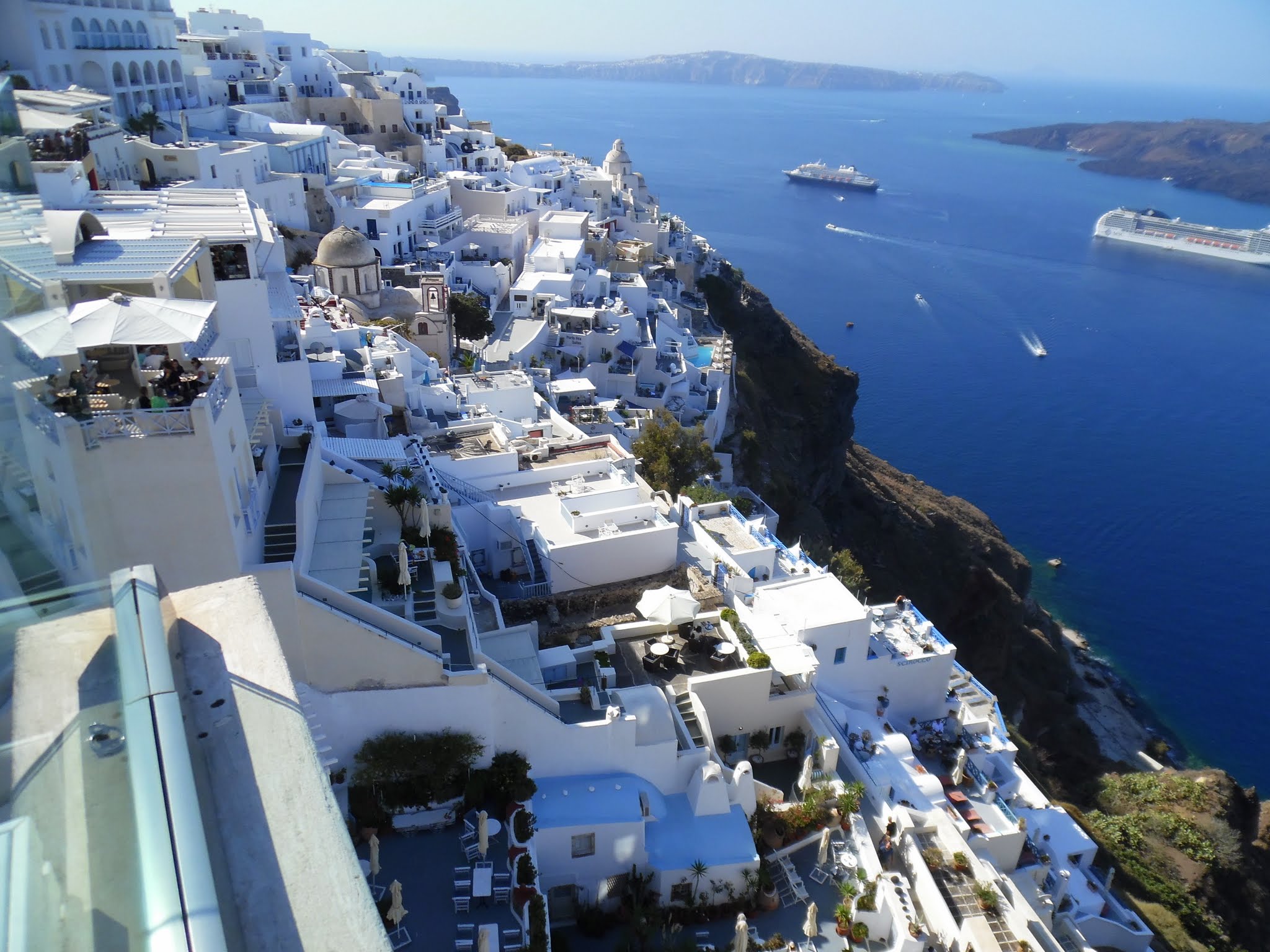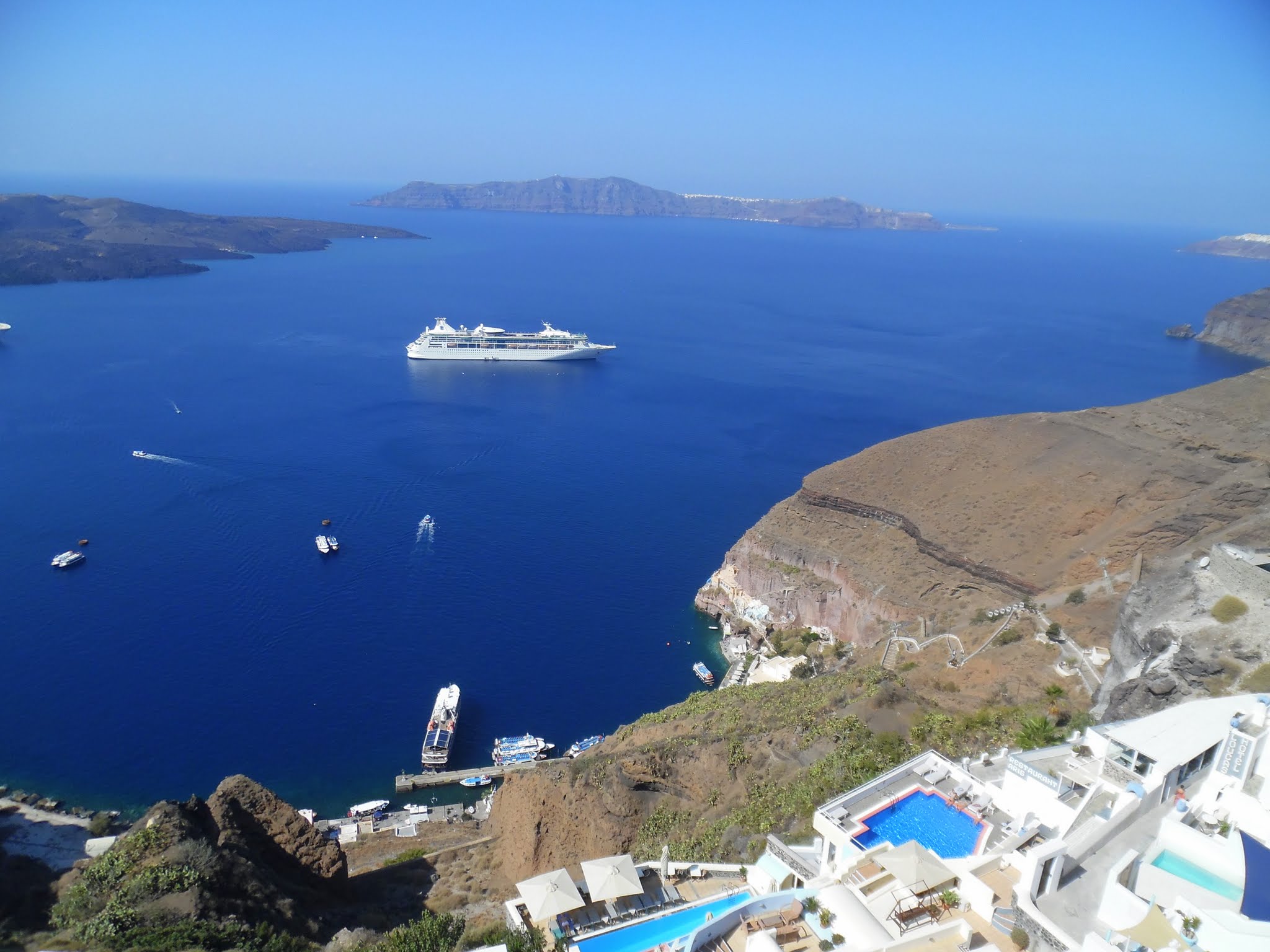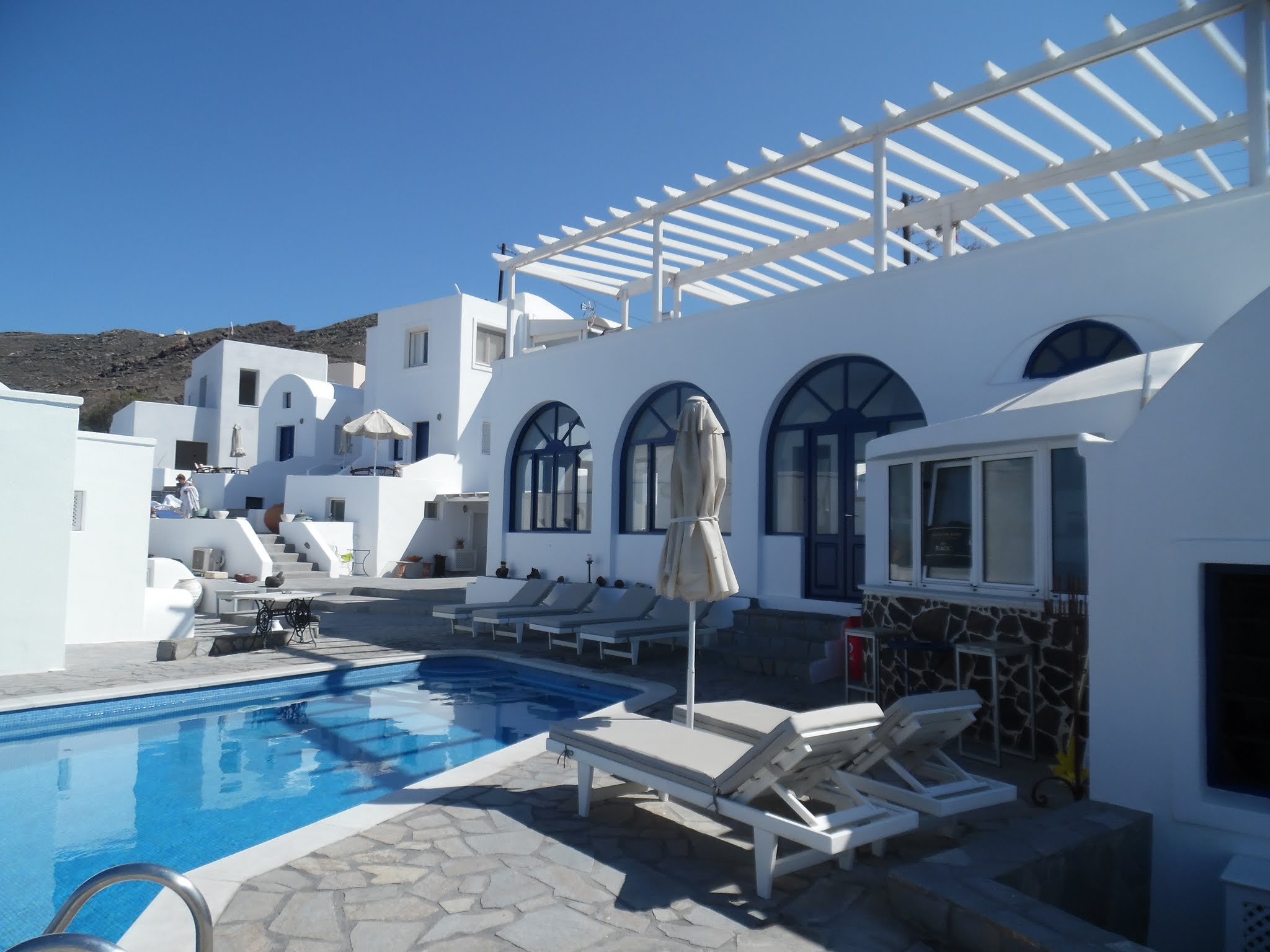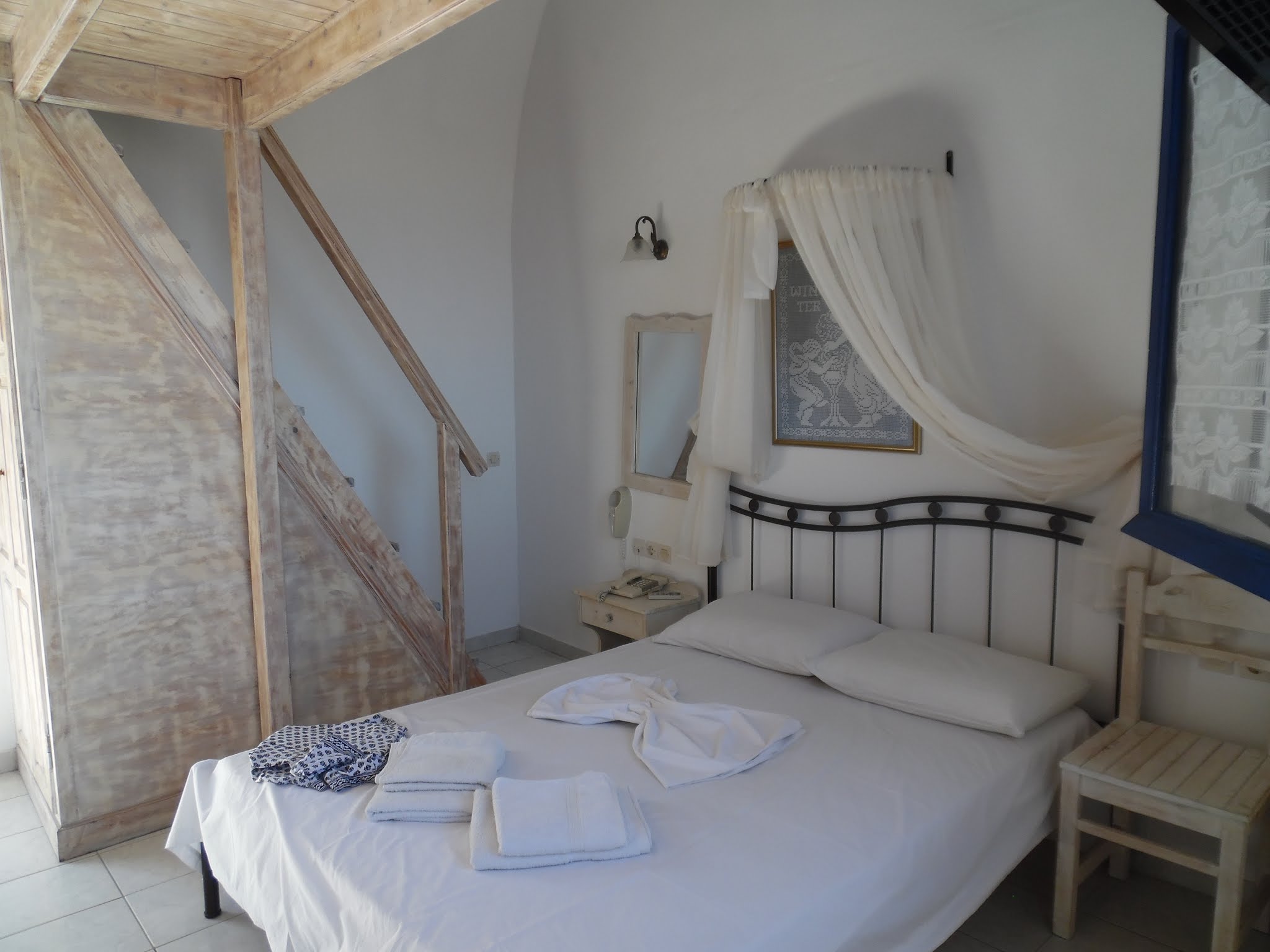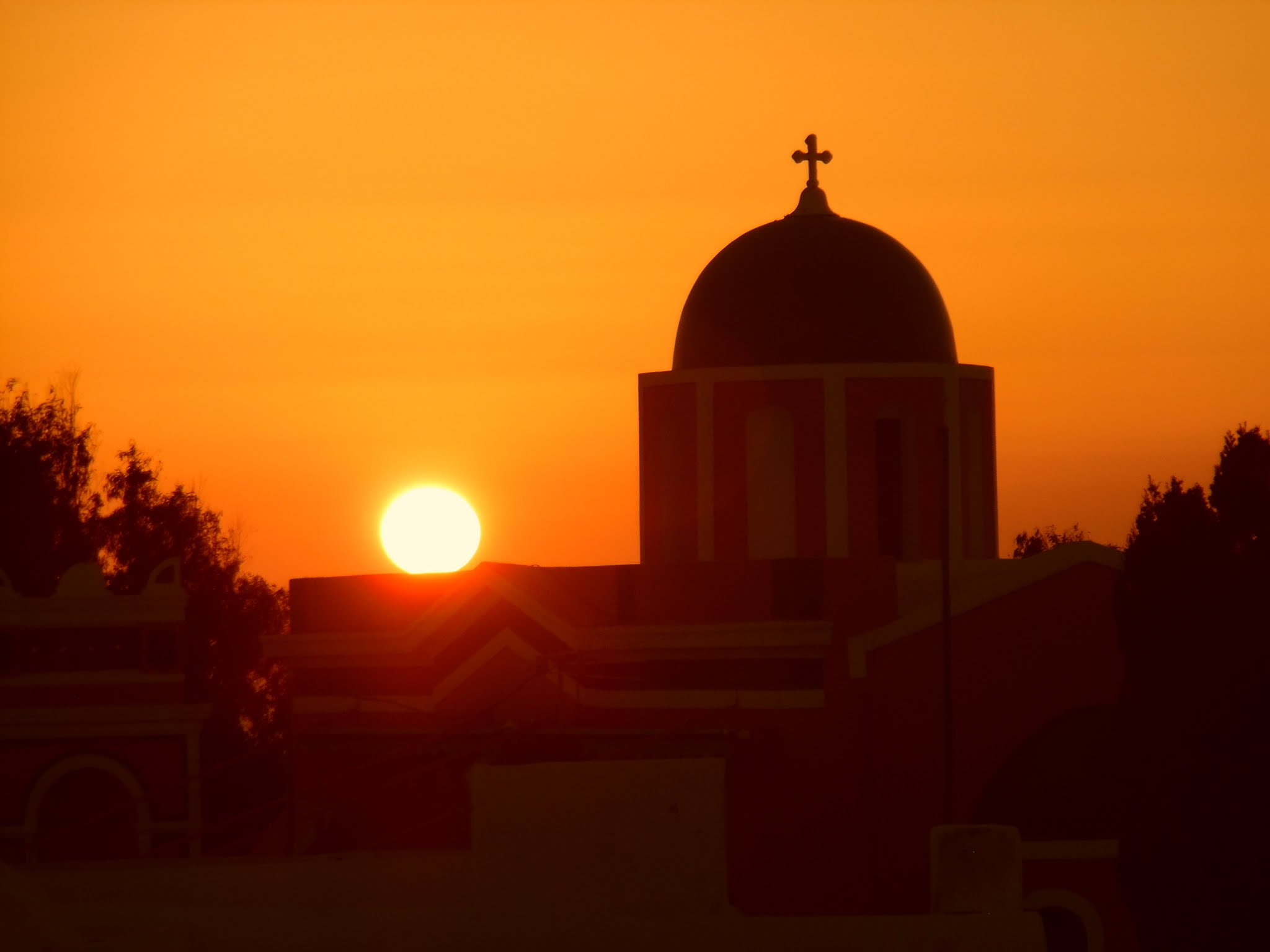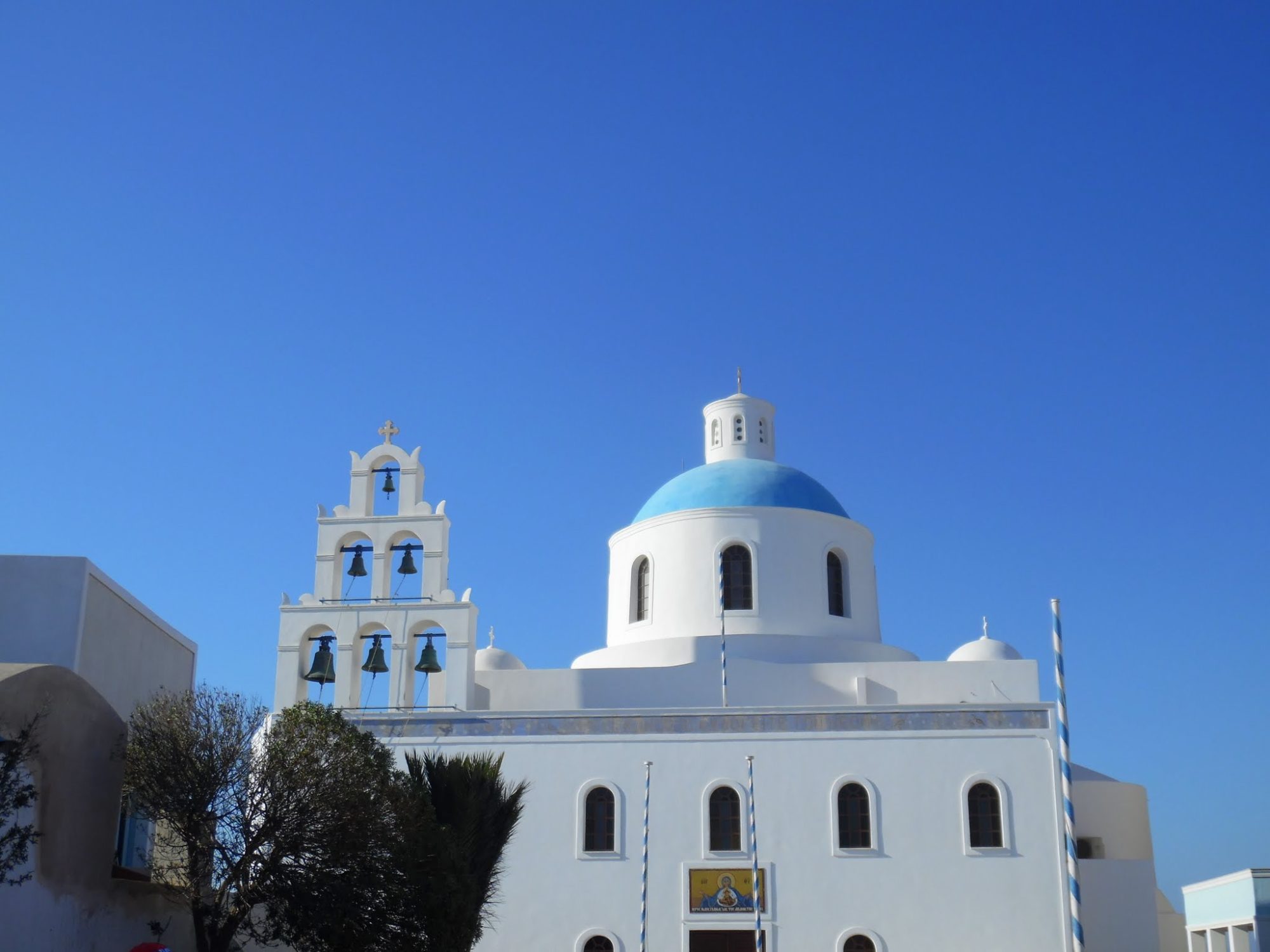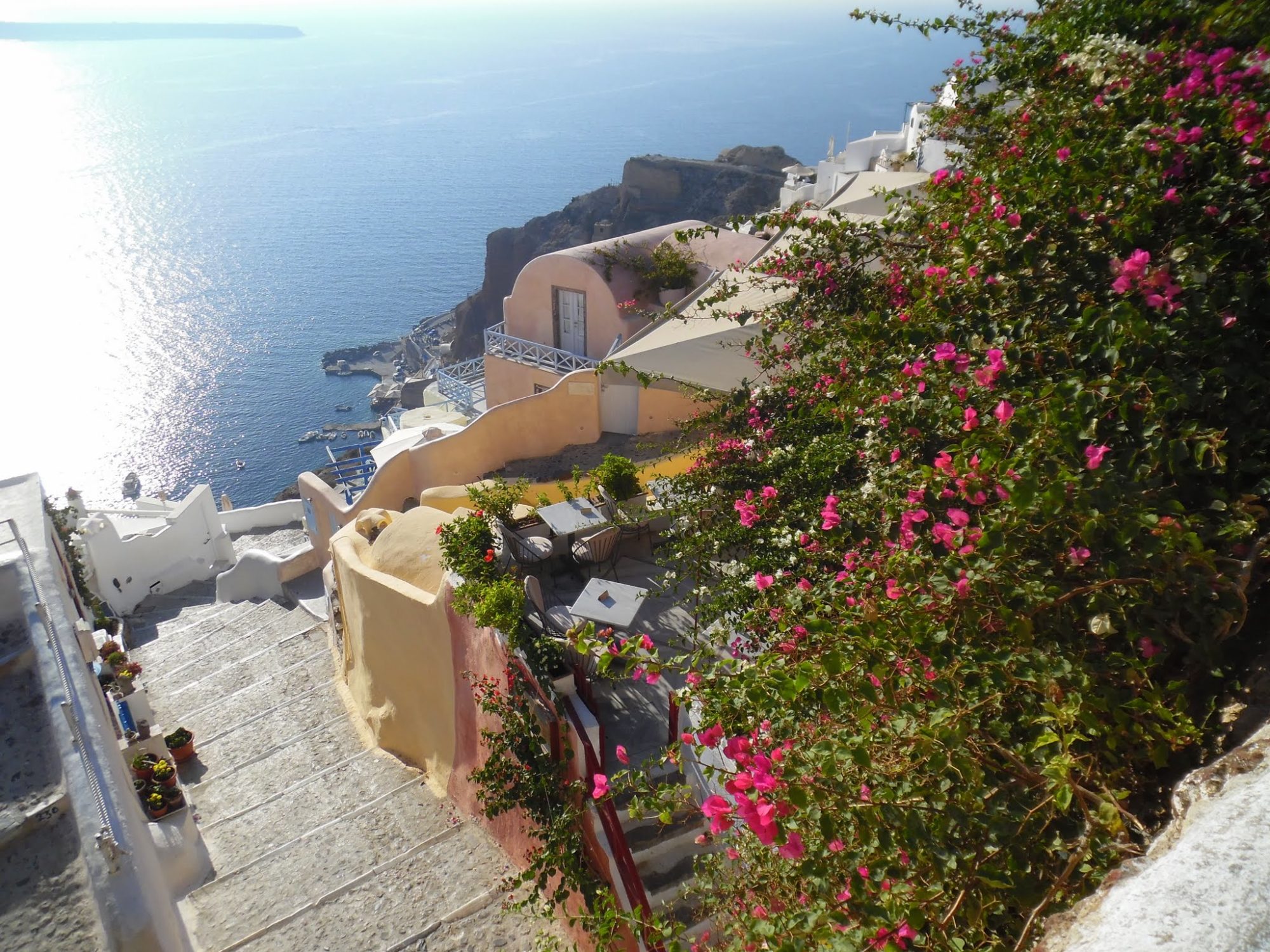We had returned for a leisurely holiday on Crete which we love and consider a favourite destination in Greece. From Crete it is very simple to visit Santorini by ferry and we embarked on this short visit in early October and were rewarded. This is a remarkable island much photographed and written about but I spent just two days there and recommend a visit. We took the early morning ferry from Heraklion and it was a pleasant short journey full of interest sailing north.
Approaching the island (which I had done first in June 2013 but not landed on that occasion) one is struck by the high volcanic cliffs and the sheer shape of the islands. It is a crescent-shaped island also called Thira, which is a group of islands consisting of Thíra, Thirassiá, Asproníssi, Palea and Nea Kaméni in the southernmost part of the Cyclades.
The whole complex of Santorini islands is still an active volcano (the same as Méthana, Mílos and Nísiros) and probably the only volcano in the world whose crater is in the sea. Intense volcanic activity resulted in the islands that form Santorini; twelve huge eruptions occurred, one every 20,000 years approximately, and each violent eruption caused the collapse of the volcano’s central part creating a large crater (caldera).
The volcano, however, managed to recreate itself repeatedly. The last big eruption occurred 3,600 years ago (during the Minoan Age), when igneous material (mainly ash, pumice and lava stones) covered the three islands (Thíra, Thirassiá and Asproníssi). The eruption destroyed the thriving local prehistoric civilization, evidence of which was found during the excavations of a settlement at Akrotíri. The solid material and gases emerging from the volcano’s interior created a huge “vacuum” underneath, causing the collapse of the central part and the creation of an enormous “pot” –today’s Caldera– with a size of 8×4 km and a depth of up to 400m below sea level.
The eruption of the submarine volcano Kolúmbo, located 6.5 km. NE of Santorini, on 27th September 1650, was the largest recorded in Eastern Mediterranean during the past millennium. The most recent volcanic activity on the island occurred in 1950 and that is not that long ago! The whole island is a huge natural geological/vulcanological museum where you can observe a wide range of geological structures and forms!
Santorini might be considered the most sought after place for a romantic getaway in Greece, since there are not many places in the world where you can enjoy exquisitely clear waters while perched on the rim of a massive active volcano in the middle of the sea! The island has a growing reputation for couples not only from Greece but from all over the world.
We had arranged for a transfer from the ferry port to our hotel which is essential. Naturally the port is at sea level but everywhere one might stay is high up on the top of the island’s cliffs and though there is public transport which is reasonably efficient a booked transfer is to my mind essential.
Santorini has become hugely expensive and even in October the small hotels had huge tariffs. However, I found Villa Agnadi which is outside Oia, the famous village perched on the extreme western edge of the island and thus the place from which to watch the sun set. It was nice, lovely little rooms with their own balconies looking north to the island of Ios which I had visited and loved in 2013 and others in the distance. Perched on the hillside there is a good view of the sloping fields and other buildings and in the morning the mist clears to reveal Ios in the early sunshine.
There is a lovely pool and sunbathing area and we had a fine breakfast the next morning. Down the road about 50 metres is a very nice taverna with the equally beautiful views and friendly service and good food. Despite it being early October it was still very hot! Later on we took the local bus which has a bus stop just near the hotel to Oia and it was so crowded but then everyone was arriving at Oia for the sunset that evening. The sheer mass of people is quite a challenge.
What can I say, a fascinating village full of beautiful views and places but even then completely overcrowded, with vast numbers of Chinese visitors. I was glad to experience the place and grateful for a long glass of fresh orange juice eventually. We then found a pleasant taverna with a roof top terrace from which to watch the sun go down and I photographed it completely.
The restaurant was perhaps not in the most perfect position and thus was nearly empty and we were grateful for the peace! We drank wine and ate meze and received friendly service and it was lovely. The island is expensive because it has become such a bucket list destination. I think it might be very nice in the winter with a very reduced crowd of tourists and the sun will continue to set!
Firá is the picturesque capital of the island and we left our hotel the next morning after a good breakfast and welcome shower in excellent ensuite; perched high up on the edge of the Caldera, it looks like a marvellous painting. Firá, together with Oia, Imerovígli and Firostefáni located high above on a cliff, make up the so-called “Caldera’s eyebrow”, which offers an amazing view of the volcano.
We waited for the local bus and somehow the jovial bus conductor squeezed us on. We enjoyed Fira and found an excellent bar at which to rest and enjoy the stunning views down the steep sides of the island which has villas, hotels and swimming pools clinging to the vertiginous sides. Stunning really, and the big cruise ships standing out in the deep blue water all make for a wonderful dramatic scene.
Naturally there are masses of shops ranging from the tourist tat to the seriously high end designer boutiques but we just shopped with our eyes. We found a shady taverna with good food and service and had a lovely lunch. The heat is still intense in October and so we looked for shade and lush creepers to give us that feeling of relaxation as well as good food. We found a taxi from the town centre later in the afternoon to return us to the ferry port. We took the evening ferry back to Heraklion and again had the pleasure of a stunning sunset.
Venture into Santorini’s seaside treasures and enjoy deep blue waters and beaches with white, red or black sand or volcanic pebbles, spectacular rock formations and impressive lunar landscapes. I think one could have stayed one more night but for me I felt glad to have experienced this extraordinary place even for a short time. There is an airport and one can fly in via Athens or indeed from some other European cities. Santorini, the youngest volcanic island in the Eastern Mediterranean beckons.
Aline Dobbie is an author of four books on India and a travel writer. She lives in Scotland but travels widely throughout the year with an annual visit to India where she was born & grew up. Aline’s earlier life was in the corporate world but now lives a rural life with emphasis on travel, gardening, cooking, and family. India, South Africa, England, Scotland, Greece and other lovely places are a constant delight to her.

